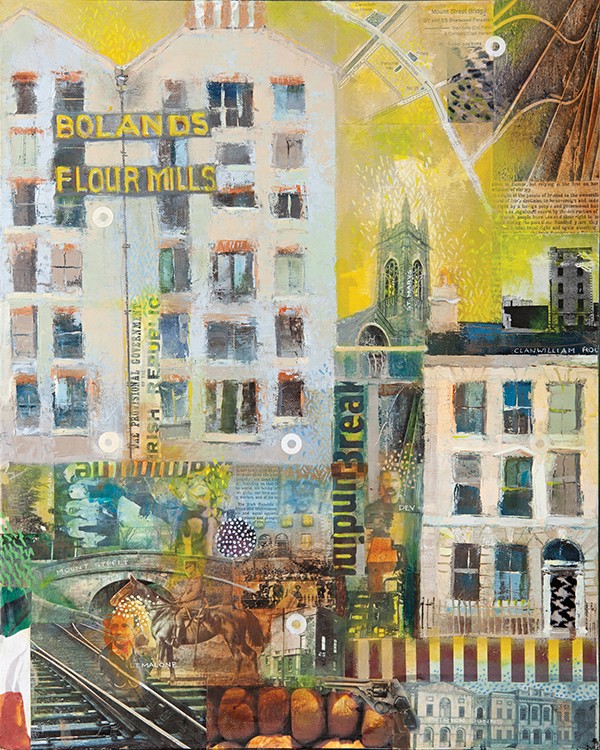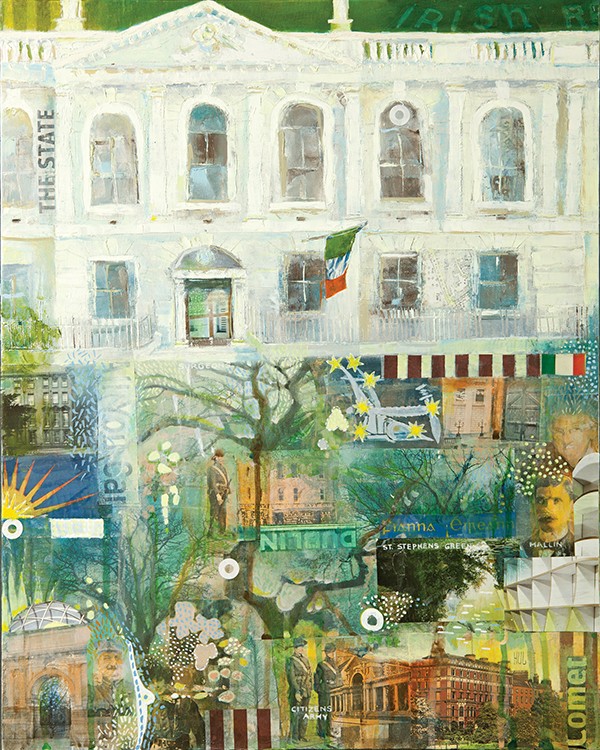
Given the year we currently find ourselves in, it has become increasingly difficult to turn a street corner without seeing a poster regarding the Easter Rising of 1916 or indeed even become embroiled in a debate regarding the significance of that particular rebellion.
Charles Hulgraine, who runs the Ballsbridge Gallery, is no stranger to this topic, as evidenced by his recent paintings of 11 garrisons that played a crucial role in the events of Easter Monday 1916.
Charles’s 11 paintings are to be put on display in the Ambassador Theatre on O’Connell Street on February 27th for a period of up to six months. This exhibition features a wide range of artifacts from 1916 up to 1923, featuring art, sculptures and street murals. Tickets are available from Ticketmaster.
The 11 garrisons featured are the Mendicity Institution, Jacob’s Biscuit Factory, Boland’s Bakery, The Four Courts, Dublin City Hall, Rath Cross in Ashbourne, South Dublin Union, Royal College of Surgeons, Enniscorthy and of course, the General Post Office.
Charles’s main political interest in these depictions was that of a lament for the socialist principles that underpinned the rebellion, which have been lost in subsequent decades as socialism gave way to nationalism.
NewsFour spoke to Charles at length about how he felt inspired to produce these historical pieces. The conversation began with a brief compendium of the early hours of the Rising, through to the occupation of the buildings, all the way through to the strategic attempt to block off British reinforcements stepping off the boat in Dun Laoghaire.
“I wanted to show their revolution as a shining light,” Charles says. “I wanted to paint these garrisons like icons. For seven days these 11 buildings were the physical manifestation of the Republic. No one had ever drawn 11 garrisons of 1916 before, nor have they been exhibited in one room. I have wanted to do it since I was a kid, and it took a lot out of me. When you’re painting you’re normally full of it but this is history, so I was researching as I was painting.”

Hulgraine’s 11 garrisons possibly reflect a change in the zeitgeist in terms of how people engage in retrospection regarding the Easter Rising. For many decades now, the Irish public have had a tendency to over-indulge in the role of martyrdom in the rebellion, as opposed to the locations which made the insurrection possible.
Many of these portraits have also been rather sombre and morbid in nature, very often been painted in black and white. Several of these structures have now been consigned to the dustbin of history, while others have been modified or serve as functioning civic buildings.
“I wanted kids to see my paintings,” Charles continues. “I have family and friends who are teachers, and the Rising has largely been ignored by our schools. We live in a Republic, we still have to live up to the ideals and spirit of 1916 and I’m sure we’ll get there eventually.”
By Craig Kinsella

